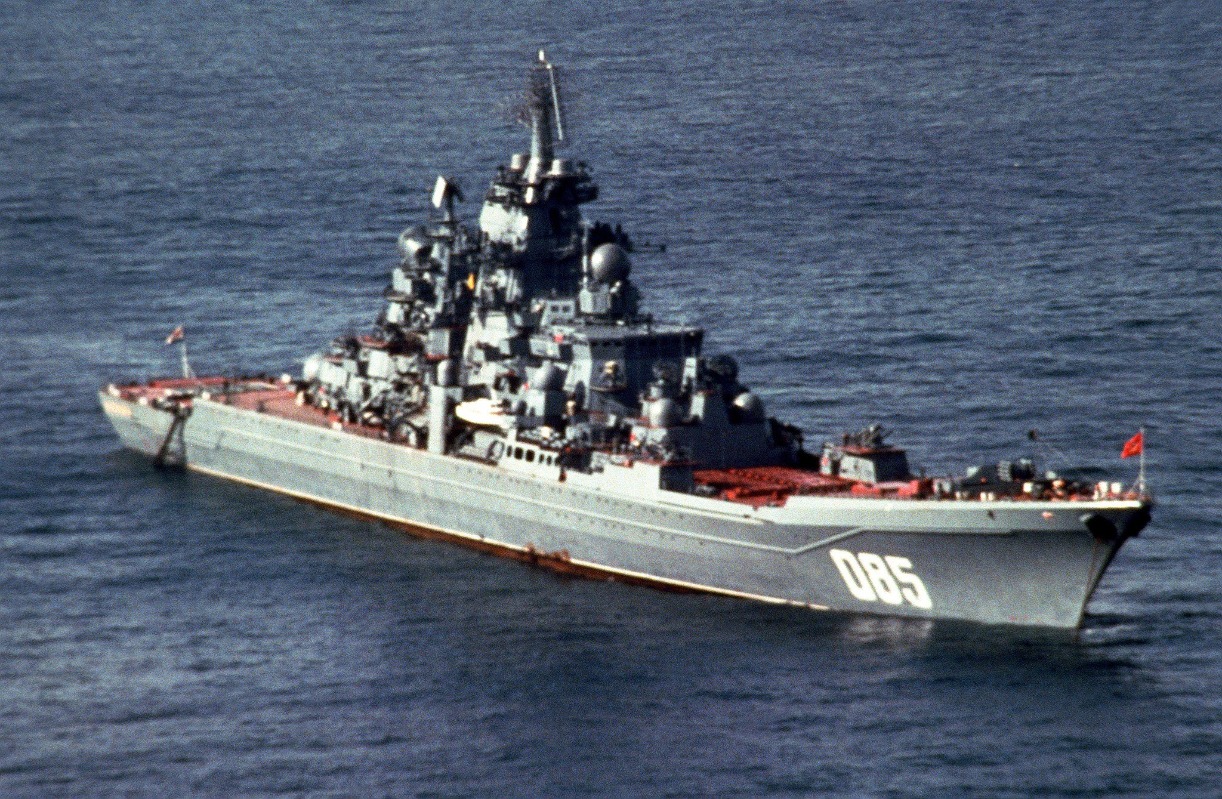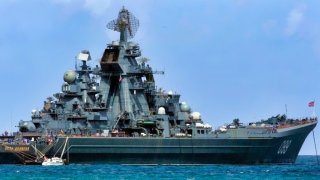Russia's Kirov-Class Battlecruiser Is Headed Into 'Uncharted Waters'
The Kirov-class battlecruisers, initially designed by the Soviet Union in the 1970s to sink U.S. Navy aircraft carriers and hunt American submarines, have proven to be more of a burden than an asset for Russia.
Summary and Key Points You Need to Know: The Kirov-class battlecruisers, initially designed by the Soviet Union in the 1970s to sink U.S. Navy aircraft carriers and hunt American submarines, have proven to be more of a burden than an asset for Russia.

-Despite their size and reputation, the Kirov-class has been underutilized, with only two of the four built still in service.
-With Russia facing the limitations of sanctions and a strained defense industry due to the Ukraine war, some in Moscow continue to entertain the idea of building more Kirov-class ships.
-However, vulnerabilities like anti-access/area-denial (A2/AD) systems, reliance on satellite guidance, and high maintenance costs make this an impractical and wasteful investment.
Russia's Kirov-Class Battlecruisers: A Costly Misstep
The Kirov-class Battlecruiser was designed by the Soviet Union to do two things: sink the aircraft carriers of the United States Navy and hunt American submarines. First designed in 1977 as part of a modernization wave by the Soviet Navy across their fleet, these giant—and expensive—warships never quite lived up to their reputations.
Still, the Russians have remained committed to these massive warships. In fact, rumors persist that the Putinist regime desires to build more of these overrated monstrosities.
Four Kirov-class ships were built. Two remain in service. One of the two has been stuck in drydock since 1999 (and you thought the Pentagon’s acquisition process was slow).
Ukraine War and A2/AD
The Ukraine War has forced a reappraisal of the Russian defensive posture as well as its overall defense industry. While the Russians are winning the conflict against Ukraine and their defense industrial base is doing far better than anyone in the West had assumed it would, given the imposition of severe sanctions by Russia’s Western trading partners, there are still limits to what Russia can do. Unlike the 1990s and 2000s, Russia is now truly isolated from the West.
Moscow, therefore, must be innovative in its use of limited resources. This likely explains why there are some in the Russian military who are contemplating building more of the Kirov-class battlecruisers.
Of course, as I have written extensively in these pages, the advent of anti-access/area denial (A2/AD) systems makes it quite difficult for any surface warship to be as capable as they otherwise would be against targets defended by the A2/AD systems. Nevertheless, as with the Americans who insist on building aircraft carriers, Russia cannot seem to quit its love affair with the Kirov-class battlecruiser.
Even though the Ukrainians in particular have shown how relatively cheap drones can be used to sink Russian warships—such as the Black Sea Fleet flagship, the Moskva—there are still some modifications to the Kirov-class that Russia could make that would ensure the Kirovs pose a challenge to their Western rivals.
The Kirov-class as a Major Hypersonics Weapon Platform
As per the original intent of the designers of the Kirov-class Battlecruiser, they could be used to conduct devastating attacks on US aircraft carriers or other US warships.
For example, the Kirov-class could be outfitted with a Russian hypersonic missile known as the Tsirkon, which many believe to have a speed of Mach 9 and a range of around 621 miles. This capability would be devastating because most defense systems, either in a carrier battle group or on land, cannot defend against the unpredictable maneuverability of hypersonic weapons.
Again, though, the problem facing the Kirov-class remains the A2/AD threat that most modern surface warships are today facing. The Kirov is a massive target that can easily be tracked by satellites in space. US submarines as well as surveillance aircraft can also stalk this particularly large prey.
Kirov-class Vulnerabilities
Then there’s the added problem that the Kirov-class relies extensively on satellite information to guide it and its weapons when they are launched. But in a potential war with the United States, the likelihood that Russian (as well as American) space assets would be destroyed is high.
Basically, US counterspace capabilities directed against Russian satellite constellations would render the Kirov-class useless.
Interestingly, despite its aggressive posture, the Kirov-class lacks a comprehensive air defense capability. So, the great ship would be exposed to all manner of attack by Western forces.
As the Kirov-class that has been languishing in drydock since 1999 has shown: these warships are costly to maintain, highly complex, and take time to repair.
If the Russians threw more of their limited resources behind the construction of Kirov-class battlecruisers, they would have to figure out how to streamline these aspects of the Kirov-class.
A Waste of Russian Resources
To close, the Kirov-class has been a waste of Russian resources since its inception. The Russian navy does not have enough of them and the systems it does of this class are underutilized.
That Moscow is even contemplating building more is ridiculous. But even if Russia were to make the modifications to the Kirov-class as was discussed above, these changes would likely be insufficient toward meeting Russian foreign policy goals in the long run.
The Kirov-class was a mistake for Russia to build. They should just give it up already.
Author Experience and Expertise: Brandon J. Weichert
Brandon J. Weichert, a National Interest national security analyst, is a former Congressional staffer and geopolitical analyst who is a contributor at The Washington Times, the Asia Times, and The-Pipeline. He is the author of Winning Space: How America Remains a Superpower, Biohacked: China’s Race to Control Life, and The Shadow War: Iran’s Quest for Supremacy. His next book, A Disaster of Our Own Making: How the West Lost Ukraine, is due October 22 from Encounter Books. Weichert can be followed via Twitter @WeTheBrandon.
All images are Creative Commons or Shutterstock.
From the Vault
Russia Freaked Out: Why the U.S. Navy 'Unretired' the Iowa-Class Battleships
Battleship vs. Battlecruiser: Iowa-Class vs. Russia's Kirov-Class (Who Wins?)


